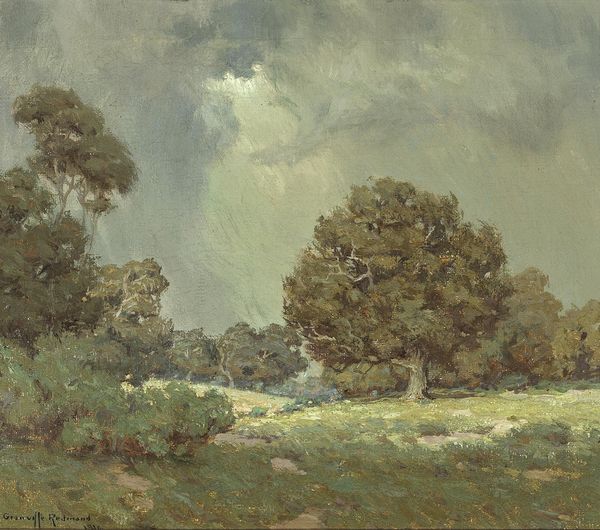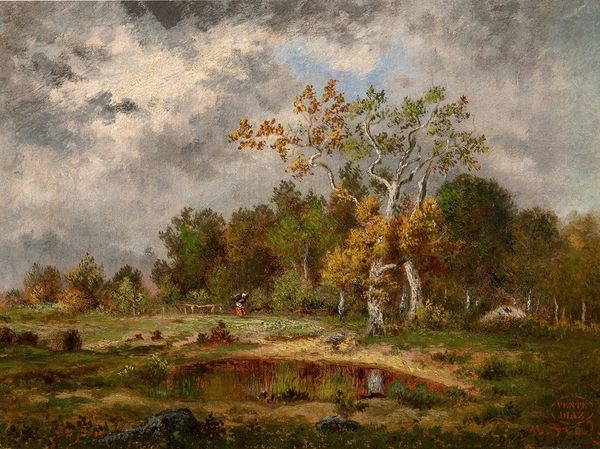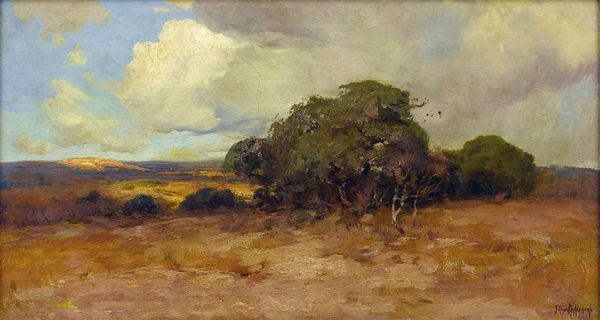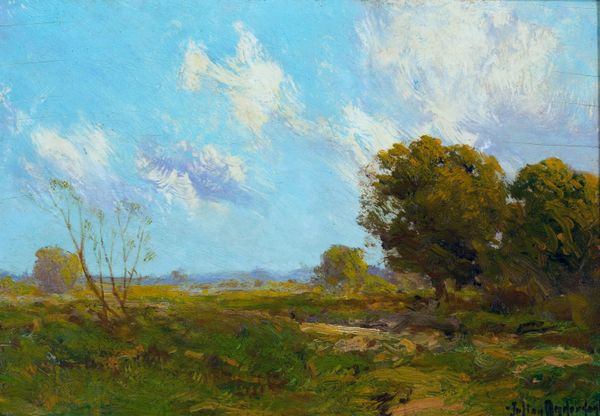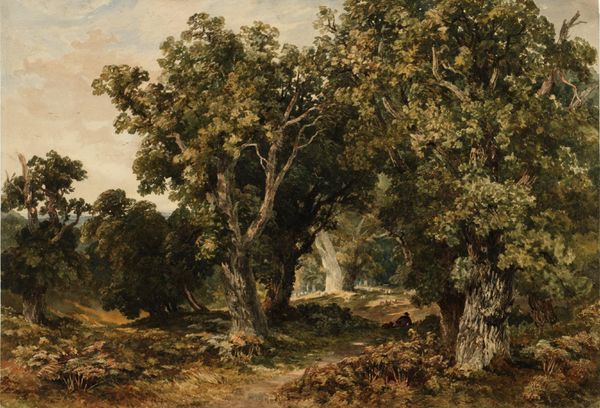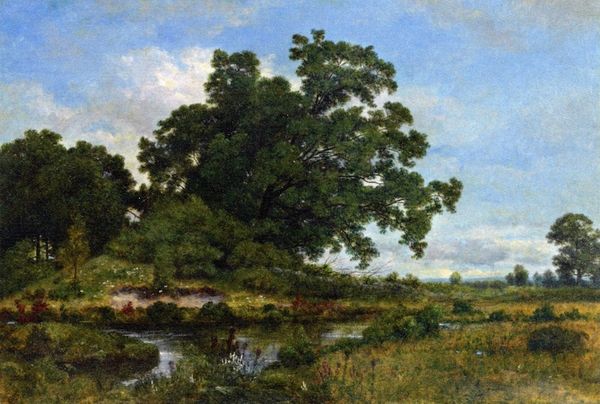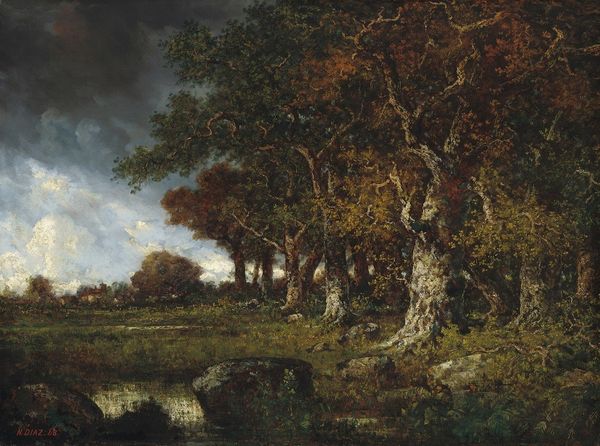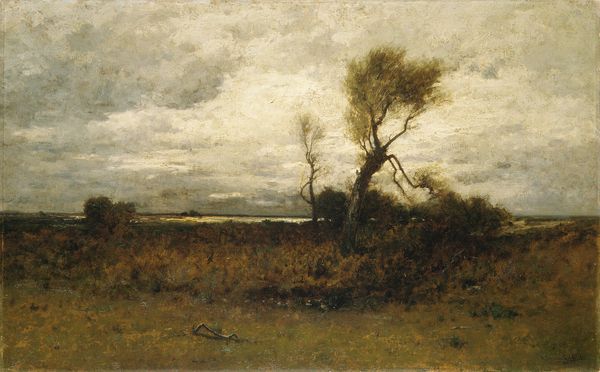
Copyright: Public domain
Curator: What a powerful presence the tree has. It's Jules Dupré’s "The Old Oak," painted around 1870. There’s an interesting focus on the landscape tradition of the era, especially in its exploration of light and shadow. Editor: It feels like standing at the edge of a fairy tale, doesn’t it? Those brooding clouds... It's romantic but with an edge. Like a storm's about to roll in, and the oak tree is the only thing brave enough to stand its ground. Curator: Exactly! Consider the material conditions in which Dupré worked. He embraced painting en plein air, directly from nature, a relatively new practice at the time facilitated by advancements in oil paint technology and portable easels. It was really about breaking free from the studio. Editor: The texture is fascinating too; you can almost feel the grit of the bark, the dampness of the earth after the rain that you know is coming. There is also some solitary figure... lost or embracing that landscape, that giant oak tree. Curator: And the implications of this direct engagement. Dupré wasn’t simply depicting a tree; he was examining its material reality. It brings questions of landscape ownership to mind too, as forestry changed during the industrial revolution. Editor: So true, you see also a struggle for the material and perhaps for its soul… This particular tree embodies so much more than just, well, treeness! You feel the passage of time etched into every branch. I wonder how many storms this old oak has weathered? Curator: And there are, too, the pigments he would have chosen for that, and from where those pigments were sourced. Landscape painting then also represented global networks of extraction and distribution, from mines to canvas. Editor: That's what's so compelling about it though, isn't it? It speaks to a feeling, a sensation, rather than a cold representation. Even today, in its aged state. I feel dwarfed and hopeful. A funny mix, actually! Curator: Yes! We must remember that Romanticism and Impressionism are, to a degree, inextricably intertwined through shifts in how people produced and then consumed paintings like this one. It moved outside the academy and toward… everything. Editor: In short, art happened! Thanks for reminding me that the 'natural' feeling of the work stems from the nuts and bolts of material processes. It's never just pretty—or intimidating—trees, is it? Curator: Never. Thanks, It has been a real treat, like a good walk in a very meaningful and complicated woods!
Comments
No comments
Be the first to comment and join the conversation on the ultimate creative platform.

